Tanzanians love to get together at open bars or restaurants after work and eat. It’s part of everyday life. And whenever there’s a gathering (that has nothing to do with politics), rest assured that food will be served.
My blog readers and friends I’ve cooked for ask me why our recipes are so reminiscent of Indian and Arab cuisine. Let me take you back in history. We’ll call it Tanzanian History 101 for Food Lovers.
Due to its natural harbor, the island of Zanzibar and the coast of mainland Tanzania became a base for the triangular trade route between East Africa, India, and the Middle East as early as the 8th century.
Indians and Persians brought spices, tea, and many other influences. The traders intermarried with locals and made Tanzania their second home. That could be one reason Tanzanians love chai ya viungo (spiced tea). To make chai ya viungo, boil water with lots of milk and cardamom, cloves, cinnamon, and ginger. (I like to add black pepper. Try it—you’ll thank me.)
In the late 17th century Oman made Zanzibar its capital and home to its sultan. Mainland Tanzania, however, was colonized by the Portuguese, then by the Germans from 1880. After World War I, the East African territory, including Zanzibar, was claimed by the British and remained under their rule until Tanzania declared its independence in 1961.
British culture never really stuck with Tanzanians, who were already accustomed to the Arab and Indian way of life. The British didn’t intermarry with locals, although they did try to influence Tanzanians’ lifestyle. For example, schoolgirls were taught to bake cakes and cookies and how to use a fork and knife. But most Tanzanians today eat with their hands or a spoon.
Like Creole food, Swahili food (now you know: Swahili is not only a language!) emerged from the mix of these foreign and indigenous coastal influences. It’s why the cuisine includes chapati, samosas, chai, bhajia, halwa, chutney, and biryani—but with its own tastes and preparations.
Not all our dishes have foreign influences, however. We also have a food that is a staple of the Bantu, the main group of indigenous Tanzanians. All Bantu tribes eat one thing in common: ugali. To prepare ugali, boil water, then slowly add a little bit of fine maize flour to make a thin porridge. Stir with a wooden spoon until thick.
People from the northern part of Tanzania prefer matoke, or green bananas steamed and mashed. Other staples eaten all around the country are boiled cassava, sweet potatoes, taro, and, of course, meat and fish. Garlic, onions, and tomatoes are a must in everyday cooking because we love our stews.
We also have local vegetables like mchicha (amaranth), matembere (potato leaves), majani ya kunde (bean leaves), kisamvu (cassava leaves), majani ya maboga (pumpkin leaves), and the list goes on. … I love cassava leaves. All these vegetables are cooked in almost the same way—either with onions and tomatoes, with peanut butter, or, my favorite way, with coconut milk.
Swahili cooking uses lots of spices. The most common are black pepper, cinnamon, ginger, turmeric, cloves, and cardamom. We use cardamom in tea, porridge, rice, ice cream, cakes, vegetables, and almost anything you eat. It’s flavorful and aromatic. Add a few cardamom pods or seeds to your boiling water for tea. I bet you will be hooked.
Now let me introduce you to recipes you must try while in Tanzania.
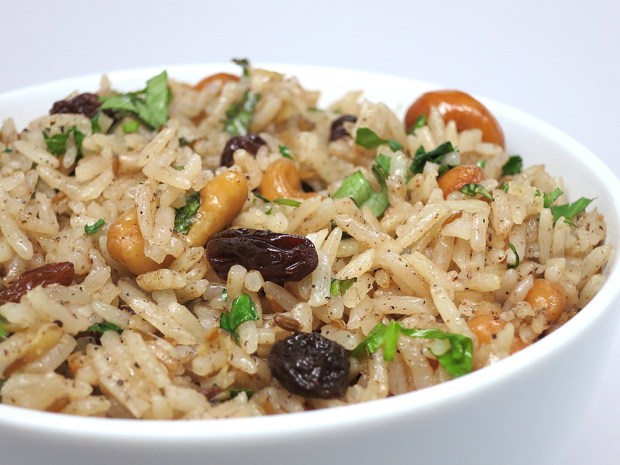
Pilau
It is very hard to miss pilau in any Tanzanian celebration, and Tanzanian pilau has more spices than the Indian version. To prepare pilau, saute onions, then add garlic, ginger, and pilau masala, which is a mix of cardamom, black pepper, cinnamon, and cloves. Stir for a while, then add rice. (We prefer basmati for pilau.) Add water, and cook until soft.
You can fancy up your pilau with chicken or any other meat. Use bouillon or broth instead of water. You can also add seafood and vegetables. People around the coastal region add cashew nuts and all sorts of other things. It all depends on the cook. We serve it with kachumbari.
Kachumbari
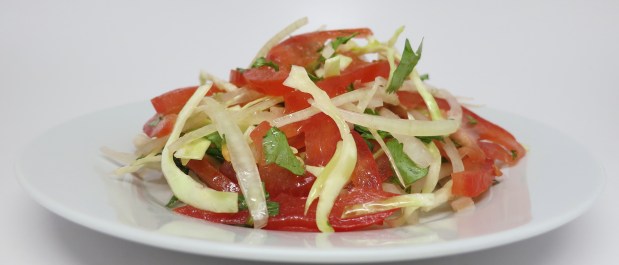
Kachumbari is Tanzanian salad. It accompanies almost everything we serve, and there are many different kinds. The common simple kachumbari is a mixture of thinly sliced cabbage, onions, tomatoes, cilantro, salt, hot peppers, and lemon or lime. Those are the base ingredients — you can add prawns, cucumber, carrots, and avocado. Nowadays some people add olive oil.
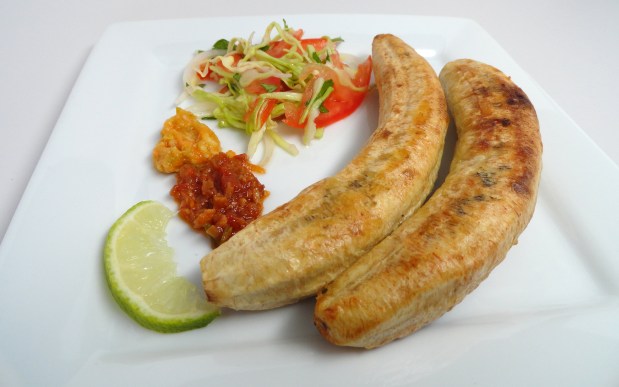
Roasted bananas
Roasted bananas are served on the streets, in local bars and restaurants. Almost every bar serves roasted bananas, with a few condiments like chachandu, achali, and kachumbari. For chachandu, we saute onions, garlic, ginger, hot peppers, tomatoes, lime, salt and blend them all in a blender. Achali is a Swahili word for “chutney.” We have chutneys made from bilimbi, mangoes, papayas, and coconut.
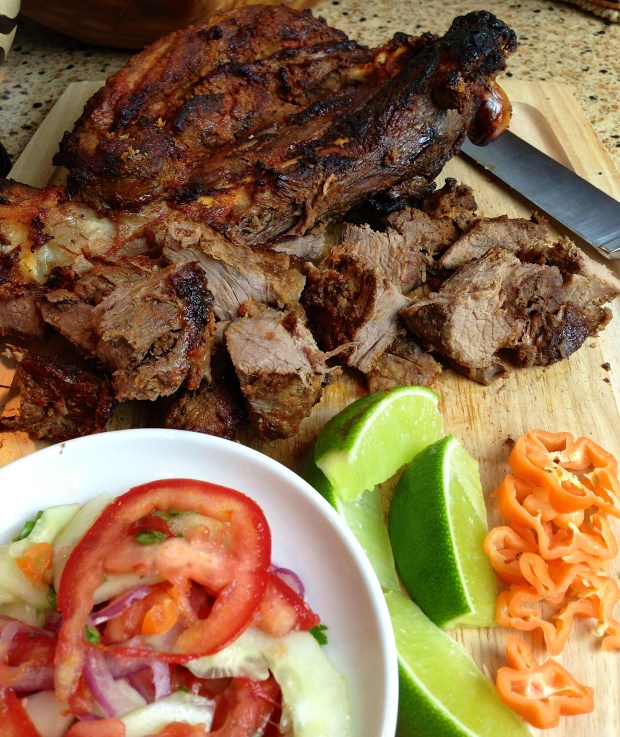
Nyama choma
This is meat that you order by the kilogram and that they roast right there in the restaurant. Never go to eat nyama choma when you are in a hurry, because the minimum time before the meat can be ready is 40 minutes. You are allowed to stay and watch, or you may enjoy a beer while waiting at your table. The marinade for nyama choma is very light—usually just lime, garlic, and salt. The goal is to make the meat taste natural. It is slowly cooked on charcoal.
Another type of nyama choma you must try is kitimoto—roasted pork on charcoal. Some restaurants saute with onions, tomatoes, lots of garlic, and hot peppers after roasting. Do not order this from a fancy restaurant. Go where the locals go. With the addition of condiments and maybe roasted bananas, this is dinner for many Tanzanians. I am one of those people who don’t like pork but still eat kitimoto. And of course we love our beer on the side.
Fried liver
Fried beef, chicken, or goat liver is a delicacy in Tanzania. It’s on the expensive side but worth it. Go to a local bar or restaurant. Everybody marinades the liver with garlic, salt, and hot peppers, and some add fried onions and other spices.
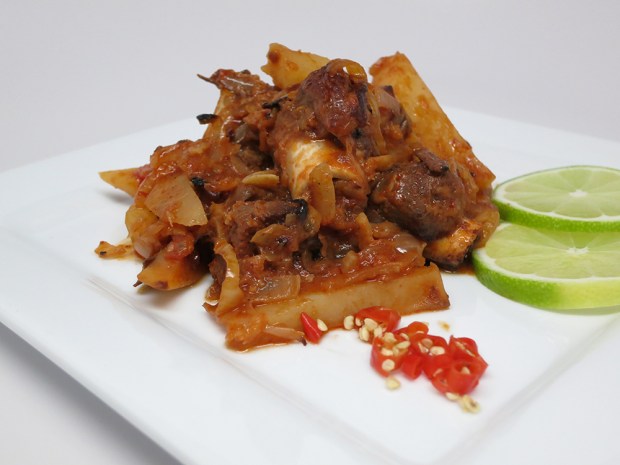
Urojo soup (Zanzibar mix)
Zanzibar mix is a mouthwatering soup and my favorite dish. It started as street food but is now served in some local restaurants, too. We saute onions and garlic, then add salt, turmeric (or food coloring and saffron), lemon juice, and hot peppers. Stir for a while, then add a little water. Add about a tablespoon of wheat flour to thicken. Some people add tamarind paste or grated mango just before removing from the heat. We serve it in soup bowls, adding bhajia, boiled eggs, grated and deep-fried cassava, coconut chutney, kacholi, potatoes, meat, and many other everyday bites.
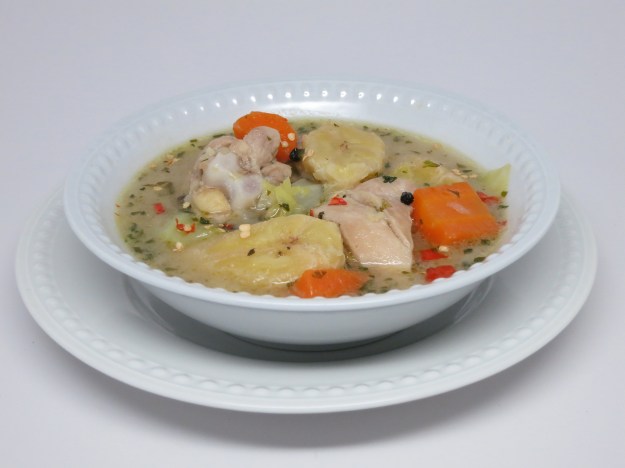
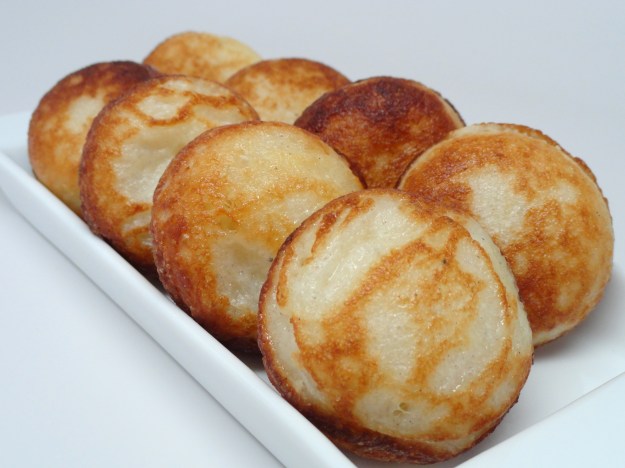
Mchemsho
While in Tanzania, I prefer to have mchemsho for breakfast. It’s a light soup made with boiled chicken, fish, or goat intestines, which are then mixed with carrots, green bananas, hot peppers, black pepper, garlic, onions, potatoes, and lime and possibly cilantro or other herbs. We eat the soup with bread or chapati. Many bachelors will visit a local restaurant before work to have mchemsho for breakfast.
Other recipes you may want to try that are favorites among locals are vitumbua, maandazi, and chapati. Vitumbua is a mix of rice flour, sugar, coconut milk or water, yeast, and cardamom. Make it into a thin batter. Leave it at room temperature overnight, and cook the next day using a pancake puff pan. Use lots of oil.
Maandazi are like doughnuts but not as oily, and unlike doughnuts you don’t feel sick after eating too many. The recipe is the same as that for making regular bread, plus lots of sugar and sometimes cardamom powder and coconut milk. Then the dough is cut into any desired shape and deep-fried. Chapati is flatbread. It’s made from a simple mix of wheat flour, water, salt, and oil. Knead until smooth, divide into small equal sections, roll to a flat round, and cook on a stovetop in a regular round pancake pan.